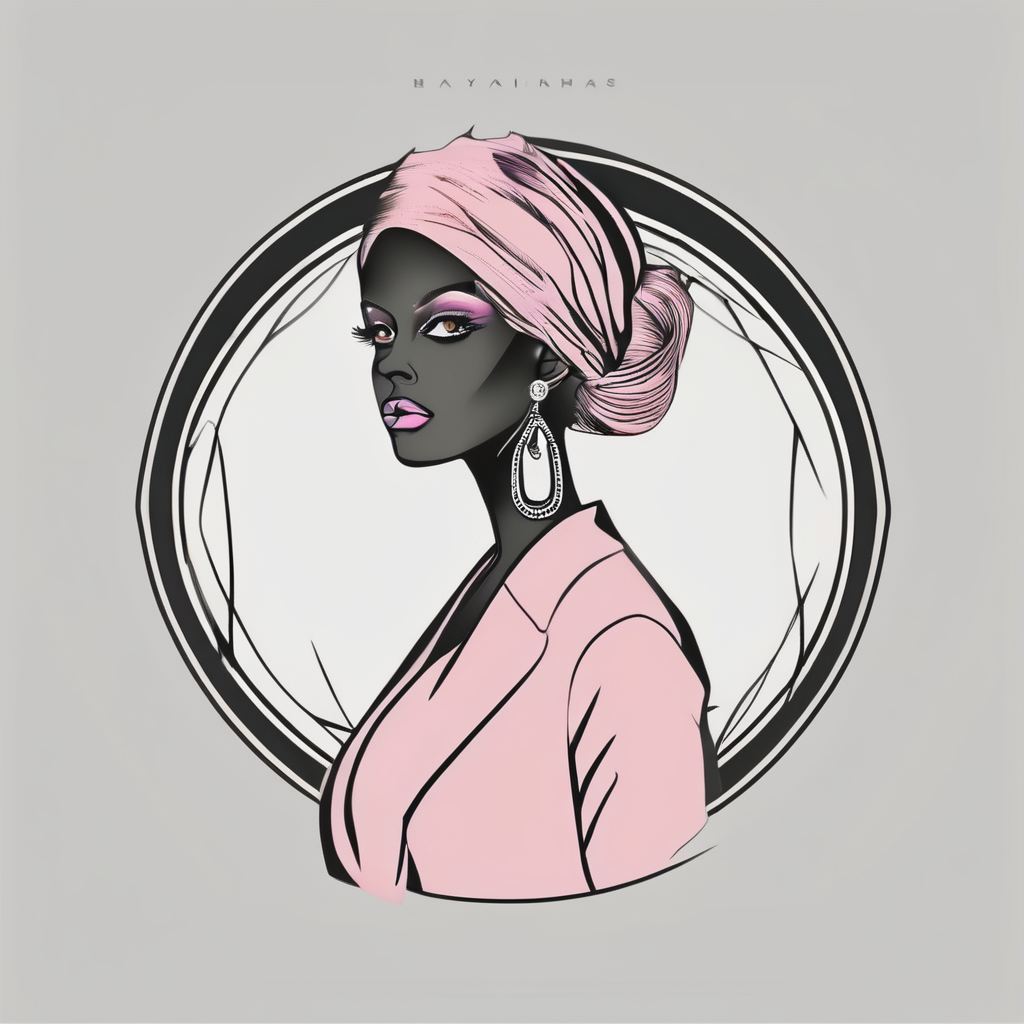Fashion shopping can become an overwhelming obsession, leading to cluttered wardrobes and mounting guilt. This guide offers practical techniques to regain control, helping you distinguish between genuine desire and impulsive buying. Discover strategies to cultivate a healthier relationship with your wardrobe, empowering you to make more mindful choices. By embracing these methods, you’ll not only revamp your style but also promote a sustainable approach to fashion. Take the first step towards a decluttered closet and a clearer conscience.
Understanding Fashion Shopping Addiction
Fashion shopping addiction is a growing concern, affecting individuals globally. This compulsive behaviour is characterised by an overwhelming urge to shop for clothing and accessories, often leading to financial and personal distress. Psychological factors play a significant role in this addiction, influencing individuals’ shopping habits and decisions.
This might interest you : Mastering Bicycle Helmet Fit: The Ultimate Guide for Long Hair Hairstyles
Psychological Factors
Several psychological factors contribute to fashion shopping addiction. Low self-esteem and the desire for social acceptance can drive individuals to seek validation through purchasing fashionable items. This behaviour is often reinforced by the temporary emotional highs experienced during shopping, creating a cycle of dependency.
Emotional Triggers
Emotional triggers are pivotal in compulsive buying. Feelings of stress, anxiety, or depression can prompt individuals to shop as a coping mechanism. The act of purchasing provides a temporary escape, offering a sense of control and fulfilment. However, this relief is short-lived, often leading to guilt and regret, which perpetuate the cycle of addiction.
In parallel : Can You Explain How to Use Color Correctors to Conceal Under-Eye Circles?
Understanding these elements is crucial in addressing fashion shopping addiction. By recognising the psychological factors and emotional triggers, individuals can seek appropriate help and strategies to manage their compulsive buying habits effectively.
Recognizing the Signs of Shopping Addiction
Identifying the signs of shopping addiction is crucial for anyone concerned about their purchasing habits. Common indicators include an inability to resist buying items even when they are unnecessary, and experiencing a sense of euphoria during shopping, followed by guilt or regret. Another telltale sign is hiding purchases from family or friends to avoid confrontation or judgement.
Self-Assessment Tools
Self-assessment tools can be instrumental in recognising these patterns. These tools often involve questionnaires or checklists that help individuals reflect on their shopping behaviours. Questions might include: “Do you shop to improve your mood?” or “Do you feel anxious when you cannot shop?” Such introspection is vital in understanding personal triggers and the extent of the addiction.
The impact of shopping addiction on mental health cannot be understated. It often leads to increased stress, anxiety, and depression, creating a vicious cycle where shopping becomes both a symptom and a temporary relief. Recognising these signs early can facilitate seeking help and implementing strategies to manage compulsive buying, ultimately leading to better mental health and financial stability.
Practical Strategies for Managing Shopping Addiction
Managing shopping addiction requires a proactive approach and commitment to change. Implementing practical tips can significantly aid individuals in gaining control over their purchasing habits.
Creating a Personal Shopping Plan
Developing a personal shopping plan is essential. Begin by identifying necessities and distinguishing them from wants. This helps in prioritising purchases and avoiding unnecessary expenses. A well-structured plan can act as a roadmap, guiding decisions and curbing impulsive behaviour.
Setting a Budget and Tracking Expenses
Setting a budget is a critical step in managing shopping addiction. Allocate a specific amount for clothing and accessories, ensuring it aligns with your financial situation. Regularly tracking expenses helps maintain accountability and provides insight into spending patterns. Utilising budgeting apps can simplify this process, offering real-time updates and alerts.
Techniques for Resisting Impulse Buys
Resisting impulse buys is challenging but achievable with the right techniques. Implementing a “cooling-off” period before making a purchase allows time to evaluate its necessity. Additionally, practising mindful shopping—focusing on needs rather than desires—can reduce impulsivity. Keeping a list of personal goals and financial priorities serves as a constant reminder of the bigger picture, reinforcing discipline.
Mindful Shopping Practices
Embracing mindful shopping is essential in curbing shopping addiction and promoting healthier purchasing habits. By integrating conscious consumerism into daily life, individuals can make more informed and intentional choices.
Mindfulness in shopping involves being fully aware of your motivations and the impact of your purchases. This awareness helps in distinguishing between genuine needs and impulsive desires, reducing unnecessary spending. Practising conscious consumerism encourages individuals to consider the ethical and environmental implications of their purchases, fostering a more sustainable lifestyle.
To effectively implement mindful shopping, consider developing a comprehensive shopping checklist. This checklist should prioritise needs over wants, serving as a guide during shopping trips. By listing essential items first, you can focus on fulfilling actual requirements before considering any additional purchases.
Here are some tips for practising conscious consumerism:
- Reflect on whether a purchase aligns with your values and long-term goals.
- Research brands for ethical practices and sustainability.
- Evaluate the necessity of an item before buying.
By adopting these mindful shopping practices, individuals can achieve greater financial stability and contribute positively to society and the environment.
Decluttering Your Wardrobe
Decluttering your wardrobe is a crucial step towards a sustainable wardrobe and mental clarity. A clutter-free closet not only creates physical space but also reduces stress, making it easier to choose outfits and feel organised.
Benefits of Decluttering
The act of decluttering can significantly enhance mental clarity by removing unnecessary items that contribute to decision fatigue. A streamlined wardrobe allows for more efficient mornings and less time spent searching for clothes. Additionally, it promotes a sense of control over your environment, fostering a positive mindset.
Step-by-Step Process
Begin by emptying your closet and sorting items into categories: keep, donate, and discard. Evaluate each piece based on its frequency of use, condition, and emotional value. Ask yourself if the item aligns with your current style and lifestyle needs. This methodical approach ensures that only versatile pieces remain, which can be mixed and matched easily.
Identifying Versatile Pieces
Focus on keeping versatile items that can be styled for various occasions. Classic pieces like a white shirt, black trousers, and a denim jacket are timeless and adaptable. Prioritise quality over quantity, ensuring each item serves multiple purposes and complements other wardrobe pieces. This strategy not only supports a sustainable wardrobe but also simplifies daily outfit choices.
Building a Sustainable Wardrobe
Creating a sustainable wardrobe is not only beneficial for the environment but also for personal well-being. By focusing on quality over quantity, individuals can build a collection of clothing that lasts longer and reduces waste. The principles of sustainable fashion encourage choosing pieces that are versatile and timeless, rather than following fleeting trends.
Principles of Sustainable Fashion
Sustainable fashion prioritises materials that are eco-friendly and ethically sourced. This includes opting for natural fibres like organic cotton or linen, which have a lower environmental impact compared to synthetic fabrics. Moreover, supporting ethical fashion brands that ensure fair wages and safe working conditions is crucial.
Tips for Curating a Sustainable Wardrobe
To curate a sustainable wardrobe, start by investing in high-quality essentials. These are pieces that can be mixed and matched, providing multiple outfit options. Regularly assess your wardrobe to identify items that truly reflect your style and needs. This not only promotes sustainability but also simplifies daily dressing decisions.
Exploring Ethical Fashion Brands
Research and support brands committed to ethical practices. Many companies now offer alternatives that align with sustainable values, such as recycled materials or transparent production processes. By choosing these brands, you contribute to a more equitable and environmentally-friendly fashion industry.
Alternatives to Buying New Clothes
Exploring fashion alternatives can significantly reduce the environmental impact of your wardrobe. One popular option is second-hand shopping. Thrift stores offer a treasure trove of unique, affordable clothing, allowing you to express your style while promoting sustainability. These shops not only extend the life of garments but also support charitable causes.
Clothing rental services are another innovative solution. They provide access to high-quality pieces for special occasions without the commitment of ownership. This approach is cost-effective and helps reduce textile waste. Additionally, clothing swaps are a fun, social way to refresh your wardrobe. By exchanging items with friends or through organised events, you gain new pieces while decluttering.
For those with a creative flair, DIY and upcycling present exciting opportunities. Transforming old clothes into new designs not only saves money but also fosters creativity. Simple alterations, like adding patches or changing buttons, can revitalise an item. Upcycling encourages a sustainable mindset, turning potential waste into cherished pieces. Embracing these alternatives helps cultivate a more conscious and environmentally friendly approach to fashion.
Seeking Support and Resources
Finding support for shopping addiction is a crucial step towards recovery. Engaging with professional help, such as counselling, can provide individuals with the tools needed to address underlying issues. Therapists specialising in compulsive behaviours can offer strategies to manage triggers and develop healthier habits.
Online resources and communities also play a vital role in supporting those struggling with shopping addiction. Numerous forums and support groups are available, where individuals can share experiences and advice. These platforms offer a sense of community and understanding, which can be immensely beneficial for someone feeling isolated by their addiction.
Personal anecdotes from those who have overcome shopping addiction highlight the importance of seeking help. Many individuals have found relief and growth through therapy and community support, learning to replace compulsive shopping with more fulfilling activities. Their stories serve as inspiration and proof that recovery is possible with the right support system.
In summary, accessing professional counselling and engaging with supportive online communities can significantly aid individuals in overcoming shopping addiction. By sharing experiences and learning from others, those affected can find the strength and guidance needed to reclaim control over their lives.
Expert Opinions on Fashion Shopping Addiction
Understanding the complexities of fashion shopping addiction requires insights from both psychologists and fashion experts. These professionals provide valuable perspectives on the underlying causes and potential solutions for this issue.
Insights from Psychologists
Psychologists highlight that fashion psychology plays a significant role in shopping addiction. They point out that societal pressures and the desire for acceptance often drive individuals to indulge in compulsive shopping. The temporary emotional highs experienced during purchases can create a dependency similar to other addictions.
Interviews with Fashion Experts
Fashion experts offer practical advice on maintaining healthy shopping habits. They suggest setting clear boundaries and being mindful of emotional triggers that lead to unnecessary purchases. Emphasising quality over quantity and focusing on personal style rather than fleeting trends can help individuals make more intentional choices.
Societal Pressures
Societal pressures significantly influence shopping behaviours. The constant exposure to advertisements and social media can create unrealistic expectations, pushing individuals to conform to certain fashion standards. Understanding these influences allows individuals to make more informed decisions and resist the urge to engage in compulsive shopping.
By incorporating expert advice and recognising the impact of societal pressures, individuals can develop healthier relationships with shopping and fashion.
Long-term Strategies for a Healthier Relationship with Fashion
Developing long-term strategies is essential for maintaining a healthy wardrobe and a balanced approach to fashion. Setting personal goals can be a powerful tool in this journey. These goals might include limiting shopping trips to once a month or committing to buying only sustainable brands. By defining clear objectives, individuals can align their shopping habits with their values and financial goals.
Continuous self-reflection is crucial in monitoring shopping habits. Regularly assess your motivations and behaviours to ensure they align with your personal goals. This practice helps in identifying patterns and triggers that may lead to compulsive buying. Keeping a journal or using a tracking app can aid in maintaining awareness and accountability.
Building a community for accountability offers additional support. Engaging with like-minded individuals can provide encouragement and shared experiences. Whether through online forums or local meetups, this community can help reinforce positive habits and provide a network of support. By sharing challenges and successes, individuals can foster a supportive environment that promotes healthier relationships with fashion.











